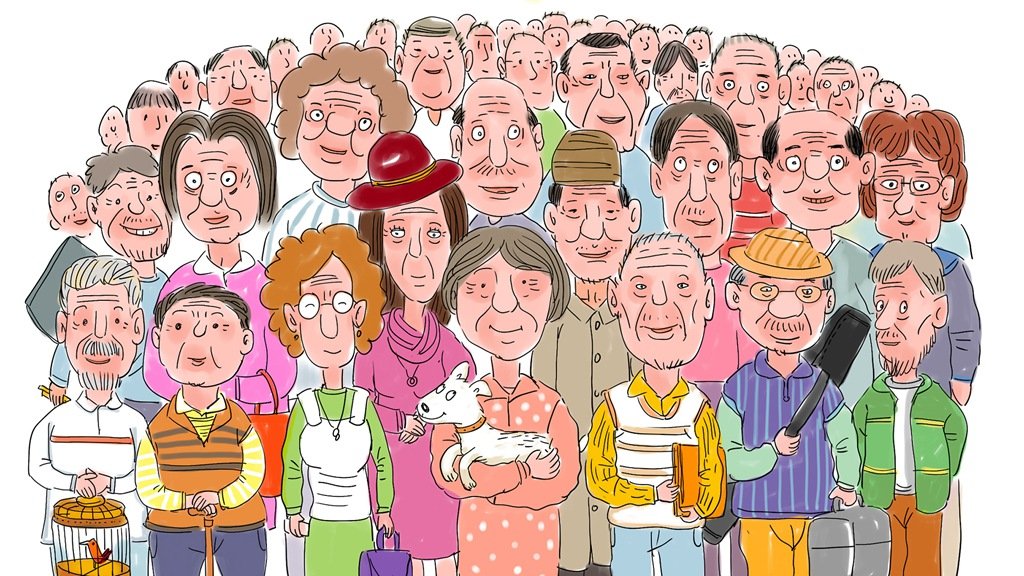The Office for National Statistics (ONS) has released its latest bulletin on the number of people over the age of 90, living in the UK. This data shows hat the total number of over 90-year-olds in the UK in 2024 reached over 625,000, over one and a half times what was 20 years earlier. The total has risen in 15 of the last 16 years, the only exception being a decline between 2019 and 2020, at the beginning of the coronavirus pandemic, that disproportionately threatened the lives of older people. This has occurred at a time when the UK’s birth rate is relatively low, standing at 11.08 births per 1,000 people. This is significantly lower than the recent high of 12.9 births per 1,000 people in 2008 and 2010, and the highest ever recorded figure of 18.8 births per 1,000 people in 1964, at the end of the post-war baby boom. This shows that the recovery in birth rates from an all-time low of 10.02 births per 1,000 people remains relatively slow. The natural consequence of a rise in the number of older people combined with a low birth rate is a rise in the average age of the UK’s population. This change will only be accelerated if the government delivers on its pledge to cut net migration.
An aging population can, to a certain extent, be explained using the demographic transition model. This geographical tool suggests that an increase in the average age of the population is a natural consequence of a country developing. This hypothesis is supported by nine of the ten countries with the highest median ages in the world being European, with the other being the also highly developed Japan. The demographic transition model is built on the principle that the better healthcare available in a developed country will lead to an increased averagelife expectancy. This would often be combined with better education leading to a declining birth rate, as a greater proportion of women choose to establish themselves in careers before having children. From this perspective, an aging population can be viewed as a symptom of the success of post-war governments, both in the UK and the EU, in creating better living conditions for their people, and allowing for greater social freedom.
The ONS’ data bulletin contains clues as to how British public sentiment has changed throughout the last 120 years. The baby boom that took place following the end of the First World War and the Spanish Flu pandemic can still be seen. This is evidenced through the disproportionately high number of people living in the 2010s, who were born in 1920, compared to the preceding years of conflict, and the following economic hardship. These figures showcase the legacy of the public’s post-war optimism, when Prime Minister David Lloyd George had recently promised “To make Britain a fit country for heroes to live in.” This was also the case during the baby boom that followed the Second World War. In this case, the foundation of the modern welfare state, including the NHS in 1948, creating a public belief that their children were going to grow up in a better world than they had. The aftermath of the coronavirus pandemic has not led to a rise in birth rates on a comparable scale. This may be due to factors such as economic uncertainty, and high youth unemployment, preventing the public from having an optimistic view of their potential children’s future. From this perspective, an aging population is very much something the government could influence and would definitely wish to avoid.
An automatic increase in government expenditure is often cited as a negative consequence of an aging population. This is due to elderly people being disproportionately dependent on public healthcare, necessitating greater investment. This is combined with a large number ofretired people requiring the government to spend more on the state pension, and other age-related benefits. While these can be later reduced through changes to government policy, this can often prove highly politically unpopular, as was proven through the controversy over the partial withdrawal of winter fuel payments last year. A fall in the proportion of the population who are seeking full-time work, as more reach the retirement age, will theoretically place greater strain on these working people, as they increasingly have to provide for their elderly relatives as well as their children. This may further reduce the birth rate, as families increasingly decide that they cannot afford to raise children, while potentially already taking time out of work to care for their elderly relatives.
On the other hand, a reduction in the size of the working age population, with more people retiring than entering the workforce, may reduce youth unemployment. This is also one of the government’s stated aims; and could be achieved through policies aimed at increasing the turnover of workers within individual firms, increasing these firms’ incentives to invest in younger staff. Also, retired and physically healthy grandparents can act as a source of childcare at relatively low cost, both to the parents who are now able to work for longer, and the government who would not be required to further invest in childcare provision. As well as these economic benefits, keeping a large number of older people integrated within society, can act to preserve a country’s cultural institutions. Retired people are more likely to prefer high-street shopping, a practice which several cities across the UK, are aiming to protect, over the online shopping methods preferred by working age and younger people. It is important to remember these potential benefits of an aging population when designing policies aimed at mitigating its impacts.
The government has a highly limited number of options when seeking to address Britain’s aging population. Any policy which aims at increasing the death rate would surely be politically terminal for any administration. Reform UK has pledged to pursue “pro-natalist” policies designed to increase the birth rate such as the removal of the two-child limit on families receiving universal credit. The party are yet to specify how these will be funded in the short-term however, or how public services may be impacted by any future baby boom. The government should be wary of the risks of an aging population and take steps to ensure that the health and welfare services are prepared to deal with the challenges this creates. Despite this, an aging population should not be regarded as inherently problematic, or as a failure of government policy. It should instead also be viewed as an opportunity to achieve the government’s social and economic aims, while also being an inevitable consequence of Britain’s status as one of the world’s most developed countries.





















